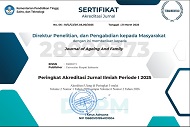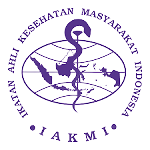The Influence Of Knowledge Towards Physicians’ Intention To Use Powered Air-Purifying Respirators As Advanced Personal Protective Equipment Mediated By Health Belief Model During Covid-19 Pandemic
Abstract
The COVID-19 has become a devastating occurrence and an urgent intervention for public health in Indonesia. Until the beginning of 2021, Indonesia has the highest number of healthcare workers deaths in Asia and fifth in the world. One of the reasons that resulted in a high number of deaths is due to the lack of personal protective equipment (PPE) to be worn in high-risk environments. Powered Air-Purifying Respirator (PAPR) is one of the most advanced protective equipment and recommended by many countries for their healthcare workers in handling COVID-19 pandemic. This research is conducted to predict Indonesian physicians’ intention to use PAPR as advanced PPE using the Health Belief Model. This research is a correlational study and a quantitative research using statistical tests in processing the data collected from online questionnaires. The findings collected from 163 respondents demonstrated that physicians in Indonesia have the intention to use PAPR as advanced PPE against COVID-19 based on their knowledge, perceived susceptibility, perceived severity, and perceived benefits of using PAPR. Perceived barriers do not have a significant influence towards physicians’ intention to use. The impact of knowledge to intention to use mediated by perceived benefits has the strongest correlation. This empirical model has moderate predictive accuracy with medium predictive relevance, therefore it could be developed and tested on an extended population. There are few managerial implications that could be recommended for hospital managers, public health administrators, and medical device suppliers to encourage physicians’ behavior. Several recommendations are given for further research development.
Keywords: Health Belief Model, Knowledge, Perceived Susceptibility, Perceived Benefits, Perceived Severity, Perceived Barriers, Powered Air-Purifying Respirator, Protective Personal Equipment
Keywords: Health Belief Model, Knowledge, Perceived Susceptibility, Perceived Benefits, Perceived Severity, Perceived Barriers, Powered Air-Purifying Respirator, Protective Personal Equipment
Full Text:
PDFDOI: https://doi.org/10.52643/joaf.v3i1.4149
Refbacks
- There are currently no refbacks.
Copyright (c) 2024 Journal of Ageing And Family

This work is licensed under a Creative Commons Attribution 4.0 International License.

This work is licensed under a Creative Commons Attribution-ShareAlike 4.0 International License.














